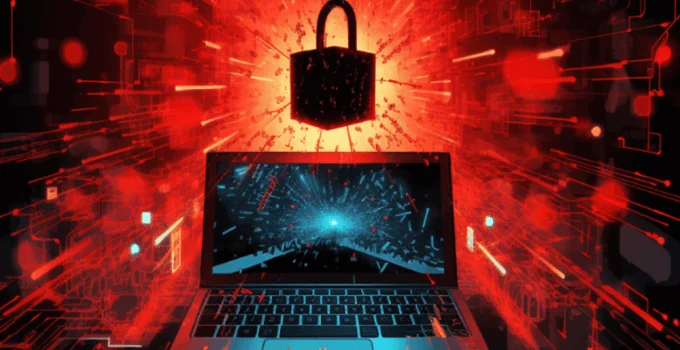Introduction: A Silent Storm in the Digital World
In 2025, ransomware isn’t just a buzzword—it’s a real and growing danger for businesses of all sizes. Cybercriminals are smarter, their attacks are more sophisticated, and their targets? Businesses that think they’re “too small to matter.” If you’re not already planning how to defend your digital assets, now is the time. Ransomware Protection isn’t optional anymore—it’s mission-critical.
What Exactly Is Ransomware?
At its core, ransomware is malicious software that locks access to your files or entire systems until a ransom is paid. Victims often face an impossible choice: pay the attackers or risk losing valuable data permanently. What makes it worse? Even paying up doesn’t guarantee recovery.
Why SMBs Are Prime Targets in 2025
You might assume cybercriminals only go after big corporations. Wrong. In fact, small and medium-sized businesses (SMBs) are often targeted because they lack strong cybersecurity defenses. With fewer resources and outdated security practices, they become easy prey.
The Evolving Landscape of Ransomware Attacks
Gone are the days of generic phishing emails. Today’s ransomware is smarter. Cybercriminals use AI-powered malware, exploit zero-day vulnerabilities, and tailor attacks to specific industries. Some even dwell silently in systems for weeks before striking, maximizing damage.
Real-World Examples That Hit Home
- Manufacturing Meltdown: A mid-sized factory lost weeks of production after a ransomware attack encrypted their scheduling and operations systems.
- Legal Lockout: A law firm dealing with sensitive cases had their client records held hostage, facing lawsuits and reputational damage.
- Healthcare Havoc: A local clinic couldn’t access patient files, disrupting care and violating HIPAA regulations.
How Ransomware Gets In: Common Entry Points
- Phishing emails with malicious links or attachments
- Outdated software and unpatched systems
- Remote Desktop Protocol (RDP) vulnerabilities
- Unsecured cloud storage and data sharing tools
- Compromised third-party vendors
Signs You’ve Already Been Compromised
- Unusual file extensions or encrypted files
- System slowdowns or locked screens
- Ransom messages demanding payment in crypto
- Disabled antivirus or backup software
Building a Ransomware Defense Plan
Start with the basics. Train your staff to recognize phishing attempts. Regularly update all systems and software. But don’t stop there—layered defense is the best defense.
The Role of Endpoint Security Solutions
Endpoint devices (laptops, mobile phones, desktops) are gateways to your business network. Deploying strong Endpoint Security Solutions ensures that even if a threat makes it to a device, it doesn’t spread through your systems.
Firewall Management That Actually Works
Firewalls are your first line of defense, but only if configured correctly. Managed firewall services offer real-time monitoring, smart filtering, and threat isolation—a must-have in 2025.
Data Backup and Recovery: Your Last Line of Defense
If ransomware gets through, you need a clean backup to restore from. Regular, encrypted, and off-site backups are your insurance policy against data loss.
Multi-Factor Authentication (MFA) as a Shield
Passwords alone aren’t enough. MFA adds a second verification layer, reducing the risk of unauthorized access even if credentials are stolen.
Cybersecurity Awareness Training
Human error is still the #1 cause of breaches. Regular training programs help employees stay alert to the latest phishing techniques and scam tactics.
Partnering with Experts for Peace of Mind
You don’t have to go it alone. Working with a trusted provider of cybersecurity solutions like Pegasus Technologies gives your business access to expert knowledge, cutting-edge tools, and 24/7 protection.
Conclusion: Don’t Wait Until It’s Too Late
Ransomware isn’t going away—it’s evolving. Waiting to act could mean financial loss, reputational damage, or even business closure. By investing in solid defenses today, you ensure your business is prepared for tomorrow. Explore advanced Cybersecurity Solutions and make ransomware defense a core part of your business strategy.
FAQs
- How does ransomware usually spread?
Through phishing emails, malicious downloads, compromised websites, or unsecured remote access points. - Should I pay the ransom if attacked?
Authorities recommend against it, as there’s no guarantee you’ll regain access and it encourages more attacks. - Can antivirus software stop ransomware?
It can help, but it’s only one part of a larger security strategy. Layered protection is key. - What should I do if my business is attacked?
Disconnect affected systems, alert your IT provider, report the attack, and begin recovery using clean backups. - Are cloud services safe from ransomware?
They can be, especially if managed properly with access controls, encryption, and routine monitoring.



